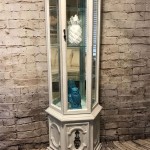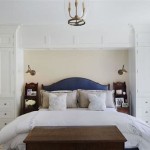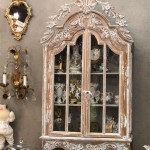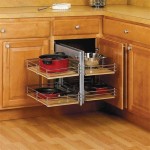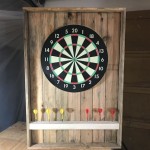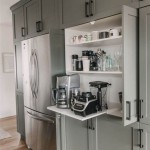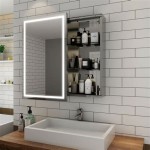Decorative Cabinet Pulls To Enhance Your Home Interior Design
Cabinet pulls, often overlooked, are integral components of interior design, functioning as both utilitarian hardware and aesthetic enhancements. These small details contribute significantly to the overall style and feel of a room, impacting the visual coherence and perceived quality of cabinetry and furniture. Selecting the appropriate decorative cabinet pulls involves considering factors such as material, style, finish, size, and placement, ensuring a harmonious blend with the existing décor.
The impact of cabinet pulls extends beyond mere functionality. They serve as visual anchors, drawing the eye and contributing to the textural and stylistic depth of a space. Properly chosen pulls can elevate the perceived value of even budget-friendly cabinets, transforming them into stylish and sophisticated elements. Conversely, poorly selected pulls can detract from an otherwise well-designed space, disrupting the visual flow and undermining the overall aesthetic.
Cabinet pulls are available in a wide array of materials, each offering distinct characteristics in terms of appearance, durability, and cost. Common materials include brass, stainless steel, bronze, nickel, glass, ceramic, wood, and acrylic. The choice of material should align with the design style, the functional requirements of the cabinetry, and the overall budget for the project.
Brass pulls, for instance, evoke a sense of classic elegance and are well-suited for traditional and transitional interiors. They can be polished to a high sheen or aged to a weathered patina, offering versatility in terms of aesthetic appeal. Stainless steel pulls, on the other hand, provide a sleek and modern aesthetic, ideal for contemporary and minimalist designs. Their durability and resistance to corrosion make them a practical choice for kitchens and bathrooms.
Bronze pulls, with their warm and earthy tones, are often favored for rustic and farmhouse-style interiors. They can be finished in a variety of shades, from dark oil-rubbed bronze to lighter antique bronze, providing flexibility in terms of design integration. Nickel pulls, available in polished, satin, and brushed finishes, offer a sophisticated and versatile option that complements a wide range of design styles. Their neutral tones and durable nature make them a popular choice for both kitchens and bathrooms.
Glass and ceramic pulls introduce an element of visual interest and can be used to add a touch of whimsy or elegance to cabinetry. These materials are often found in vintage-inspired designs and can be customized with intricate patterns and colors. Wood and acrylic pulls offer a more organic and contemporary aesthetic, respectively. Wood pulls can be stained or painted to match the cabinetry, while acrylic pulls are available in a variety of transparent and opaque colors.
Understanding Different Styles of Cabinet Pulls
The style of cabinet pulls should complement the overall design aesthetic of the room. Common styles include traditional, contemporary, transitional, rustic, and minimalist. Traditional pulls often feature ornate detailing, such as scrolls, rosettes, and beveled edges. Contemporary pulls typically have clean lines and geometric shapes, reflecting a modern and streamlined aesthetic. Transitional pulls bridge the gap between traditional and contemporary styles, offering a balanced blend of classic and modern elements.
Rustic pulls often incorporate natural materials, such as wood, iron, and leather, evoking a sense of warmth and authenticity. They may feature distressed finishes and handcrafted details, adding character and charm to the space. Minimalist pulls are characterized by their simplicity and functionality. They often have clean lines and understated designs, blending seamlessly with the surrounding cabinetry.
Knobs and pulls are the two main categories of cabinet hardware. Knobs are typically single-point attachments, while pulls have two or more attachment points. The choice between knobs and pulls depends on personal preference, the style of the cabinetry, and the size of the drawers and doors. Generally, pulls are used on larger drawers and doors, while knobs are used on smaller drawers and doors. However, this is not a strict rule, and there are many exceptions. Some designers prefer to use pulls throughout an entire kitchen, while others prefer to mix and match knobs and pulls for a more eclectic look.
Beyond the primary styles, cabinet pulls can also reflect specific design movements or historical periods. Art Deco pulls, for instance, feature geometric patterns and luxurious materials, reflecting the glamour and sophistication of the 1920s and 1930s. Mid-century modern pulls often have clean lines and organic shapes, reflecting the minimalist and functional aesthetic of the 1950s and 1960s. Victorian pulls are characterized by their ornate detailing and elaborate designs, reflecting the opulence and grandeur of the Victorian era. The selection of a specific style depends on the desired aesthetic and the overall design concept.
The Importance of Finish and Color
The finish and color of cabinet pulls play a crucial role in creating a cohesive and visually appealing interior design. The finish refers to the surface treatment applied to the pull, which can affect its appearance and durability. Common finishes include polished, brushed, satin, antique, and oil-rubbed. The color of the pull should coordinate with the cabinetry, countertops, backsplash, and other elements in the room.
Polished finishes, such as polished chrome and polished brass, offer a high-gloss sheen that reflects light and adds a touch of glamour to the space. Brushed finishes, such as brushed nickel and brushed stainless steel, have a subtle texture that diffuses light and creates a softer, more understated look. Satin finishes, such as satin nickel and satin bronze, offer a smooth, matte surface that is both elegant and durable. Antique finishes, such as antique brass and antique bronze, have a weathered patina that adds character and charm to the space.
Oil-rubbed finishes, such as oil-rubbed bronze, have a dark, rich color that complements rustic and traditional designs. The color of the cabinet pulls should be chosen carefully to ensure that it complements the surrounding elements. Neutral colors, such as white, black, and gray, are versatile and can be used in a variety of design styles. Metallic colors, such as gold, silver, and bronze, add a touch of elegance and sophistication to the space. Bold colors, such as red, blue, and green, can be used to add a pop of personality and visual interest.
The selection of the finish and color should also consider the existing hardware in the room. Ideally, the finishes and colors of the cabinet pulls should be consistent with other hardware, such as faucets, light fixtures, and door handles. This creates a sense of visual harmony and ensures that the overall design is cohesive. If mixing finishes, it is generally advisable to choose finishes that are similar in tone and sheen. For example, brushed nickel and satin nickel can be used together, while polished chrome and oil-rubbed bronze should generally be avoided.
Practical Considerations: Size, Placement, and Ergonomics
Beyond aesthetics, practical considerations such as size, placement, and ergonomics are crucial for selecting cabinet pulls that are both functional and comfortable to use. The size of the pull should be proportional to the size of the drawer or door. Smaller drawers and doors typically require smaller pulls, while larger drawers and doors require larger pulls. A pull that is too small can be difficult to grip, while a pull that is too large can overpower the cabinetry.
The placement of the pull should also be considered. Pulls are typically mounted in the center of drawers and doors, but there are variations depending on the style of the cabinetry and the personal preference of the homeowner. Horizontal pulls are commonly used on drawers, while vertical pulls are commonly used on doors. However, some designers prefer to use horizontal pulls on both drawers and doors for a more streamlined look. The placement of the pulls should be consistent throughout the room to create a sense of visual order.
Ergonomics refers to the design of products to optimize human well-being and overall system performance. When selecting cabinet pulls, it is important to consider the ergonomics to ensure that they are comfortable to grip and easy to use. Pulls with rounded edges are typically more comfortable to grip than pulls with sharp edges. The depth and width of the pull should also be considered to ensure that it provides adequate space for fingers. For individuals with limited dexterity or strength, larger pulls with a comfortable grip are recommended.
The height of the pull should also be considered, particularly for lower cabinets. Pulls that are mounted too low can be difficult to reach, while pulls that are mounted too high can be uncomfortable to use. The ideal height for cabinet pulls is typically between 36 and 42 inches from the floor, but this can vary depending on the individual's height and reach. The placement of pulls should be tested and adjusted as needed to ensure that they are comfortable and easy to use for all members of the household.
Finally, it is important to consider the durability and maintenance requirements of the cabinet pulls. Pulls that are made from high-quality materials and finishes will typically last longer and require less maintenance than pulls that are made from less durable materials. Stainless steel and brass pulls are known for their durability and resistance to corrosion. Pulls with polished finishes may require more frequent cleaning to maintain their shine, while pulls with brushed or satin finishes may be easier to maintain. The selection of cabinet pulls should be based on a balance of aesthetics, functionality, and durability.

The Ultimate Guide To Decorative Cabinet Hardware Woodworker Express Blogwoodworker Blog

Home Hardware Rejuvenation

Best Kitchen Cabinet Hardware 2024

The Best Kitchen Style For White Cabinets And Black Hardware

Cabinet Hardware Knobs And Pulls Kitchen Resources

10 Simple Ideas To Update Your Kitchen Cabinets Jenna Sue Design

Best Kitchen Cabinet Hardware 2024

The Ultimate Guide To White Cabinets With Gold Hardware

Zeckos Set Of 6 White Cast Iron Scallop Sea S Drawer Pulls Nautical Cabinet Knobs

The Ultimate Guide To White Cabinets With Gold Hardware
Related Posts

